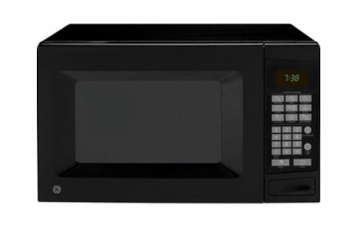5 Things You Shouldn't Do With a Microwave Oven

If you're looking to inject a little spark into a boring afternoon, trust us: Putting strange things in your microwave oven is not a good idea. Unless you're on "MythBusters." Or "Jackass." So please, kids — don't try these at home.
Recharging a battery
In 2003, a man in Perth, Australia, tried to recharge his mobile phone battery by cooking it in a microwave oven, according to the Mercury newspaper. The result? An explosion, firefighters rushing to the scene and hundreds of dollars in fire damage, namely to the microwave.
Destroying a CD
A reader of the Daily Telegraph — probably obsessed with safe electronic data disposal — once asked if he could put his CD in the microwave. The Telegraph said no: "It can ... cause arcing inside the oven, which may damage it or shorten its life. It could also release toxic gasses, which you really wouldn't want anywhere near your food."
Lighting a match
The heat from a lit match or wooden toothpick becomes so intense that it begins to turn into a plasma, or ionized gas, according to at least one online video. Observe that this fellow is in full body protection and still beats a hasty retreat shortly after setting the toothpick alight.
Sign up for the Live Science daily newsletter now
Get the world’s most fascinating discoveries delivered straight to your inbox.
Electricizing aluminum foil
When electric fields in the microwave flow through the thin metal foil, according to HowStuffWorks, the foil quickly gets "overwhelmed" and heats up rapidly. The crinkly edges will sputter sparks. Next, you could have a full-blown blaze on your hands.
Heating up a light bulb
Videos on Science Geek Girl's website show a pulsating glow emanating from light bulbs in a microwave. Author Stephanie Chasteen, a physicist and an educator, explains that the microwave creates a current in the metal of the bulb, which lights up the filament. Meanwhile, the argon gas surrounding the filament glows purple because the microwave is at a high voltage and creates a plasma. But a light bulb also contains some metal, so once again: Don't try this at home, kids.
Follow Elizabeth Howell @howellspace, or LiveScience on Twitter @livescience. We're also on Facebook& Google+.

Elizabeth Howell was staff reporter at Space.com between 2022 and 2024 and a regular contributor to Live Science and Space.com between 2012 and 2022. Elizabeth's reporting includes multiple exclusives with the White House, speaking several times with the International Space Station, witnessing five human spaceflight launches on two continents, flying parabolic, working inside a spacesuit, and participating in a simulated Mars mission. Her latest book, "Why Am I Taller?" (ECW Press, 2022) is co-written with astronaut Dave Williams.










